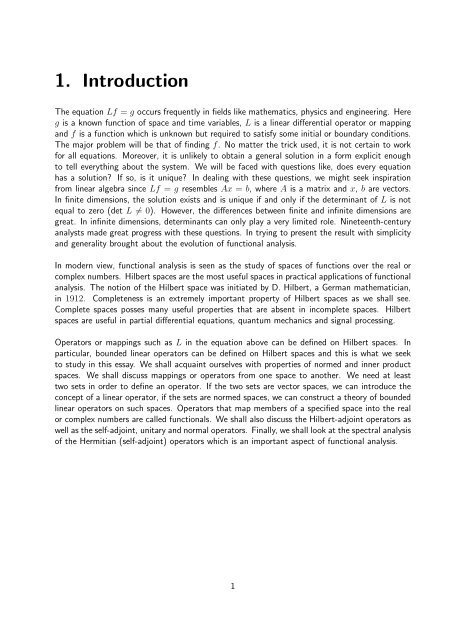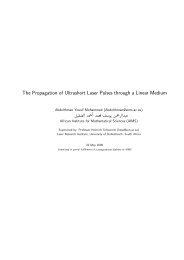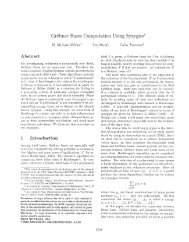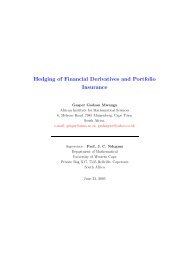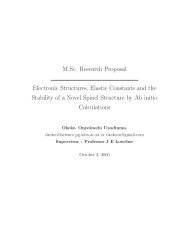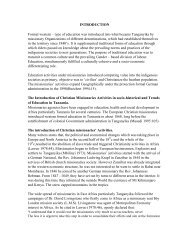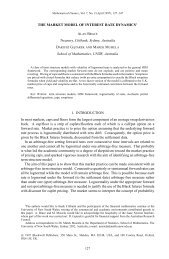Operators on Hilbert Spaces - user web page - AIMS
Operators on Hilbert Spaces - user web page - AIMS
Operators on Hilbert Spaces - user web page - AIMS
Create successful ePaper yourself
Turn your PDF publications into a flip-book with our unique Google optimized e-Paper software.
1. Introducti<strong>on</strong><br />
The equati<strong>on</strong> Lf = g occurs frequently in fields like mathematics, physics and engineering. Here<br />
g is a known functi<strong>on</strong> of space and time variables, L is a linear differential operator or mapping<br />
and f is a functi<strong>on</strong> which is unknown but required to satisfy some initial or boundary c<strong>on</strong>diti<strong>on</strong>s.<br />
The major problem will be that of finding f. No matter the trick used, it is not certain to work<br />
for all equati<strong>on</strong>s. Moreover, it is unlikely to obtain a general soluti<strong>on</strong> in a form explicit enough<br />
to tell everything about the system. We will be faced with questi<strong>on</strong>s like, does every equati<strong>on</strong><br />
has a soluti<strong>on</strong>? If so, is it unique? In dealing with these questi<strong>on</strong>s, we might seek inspirati<strong>on</strong><br />
from linear algebra since Lf = g resembles Ax = b, where A is a matrix and x, b are vectors.<br />
In finite dimensi<strong>on</strong>s, the soluti<strong>on</strong> exists and is unique if and <strong>on</strong>ly if the determinant of L is not<br />
equal to zero (det L = 0). However, the differences between finite and infinite dimensi<strong>on</strong>s are<br />
great. In infinite dimensi<strong>on</strong>s, determinants can <strong>on</strong>ly play a very limited role. Nineteenth-century<br />
analysts made great progress with these questi<strong>on</strong>s. In trying to present the result with simplicity<br />
and generality brought about the evoluti<strong>on</strong> of functi<strong>on</strong>al analysis.<br />
In modern view, functi<strong>on</strong>al analysis is seen as the study of spaces of functi<strong>on</strong>s over the real or<br />
complex numbers. <strong>Hilbert</strong> spaces are the most useful spaces in practical applicati<strong>on</strong>s of functi<strong>on</strong>al<br />
analysis. The noti<strong>on</strong> of the <strong>Hilbert</strong> space was initiated by D. <strong>Hilbert</strong>, a German mathematician,<br />
in 1912. Completeness is an extremely important property of <strong>Hilbert</strong> spaces as we shall see.<br />
Complete spaces posses many useful properties that are absent in incomplete spaces. <strong>Hilbert</strong><br />
spaces are useful in partial differential equati<strong>on</strong>s, quantum mechanics and signal processing.<br />
<str<strong>on</strong>g>Operators</str<strong>on</strong>g> or mappings such as L in the equati<strong>on</strong> above can be defined <strong>on</strong> <strong>Hilbert</strong> spaces. In<br />
particular, bounded linear operators can be defined <strong>on</strong> <strong>Hilbert</strong> spaces and this is what we seek<br />
to study in this essay. We shall acquaint ourselves with properties of normed and inner product<br />
spaces. We shall discuss mappings or operators from <strong>on</strong>e space to another. We need at least<br />
two sets in order to define an operator. If the two sets are vector spaces, we can introduce the<br />
c<strong>on</strong>cept of a linear operator, if the sets are normed spaces, we can c<strong>on</strong>struct a theory of bounded<br />
linear operators <strong>on</strong> such spaces. <str<strong>on</strong>g>Operators</str<strong>on</strong>g> that map members of a specified space into the real<br />
or complex numbers are called functi<strong>on</strong>als. We shall also discuss the <strong>Hilbert</strong>-adjoint operators as<br />
well as the self-adjoint, unitary and normal operators. Finally, we shall look at the spectral analysis<br />
of the Hermitian (self-adjoint) operators which is an important aspect of functi<strong>on</strong>al analysis.<br />
1


